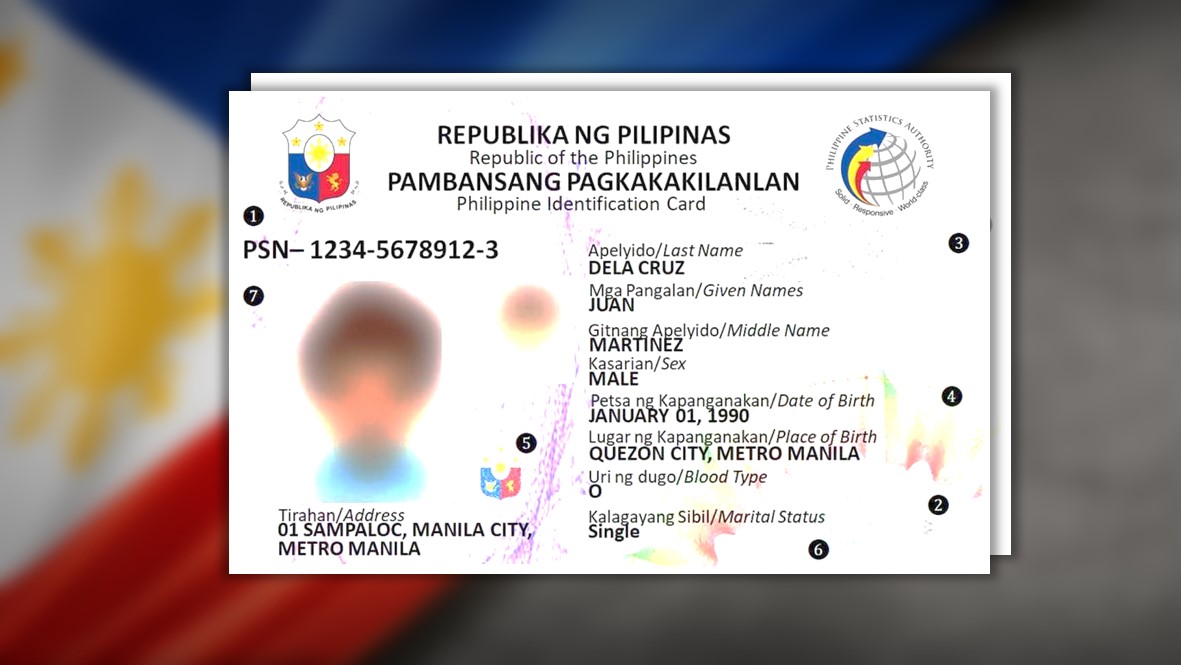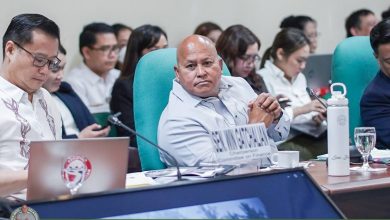Signed into law by President Rodrigo Roa Duterte in August 2018, Republic Act No. 1105, otherwise known as the Philippine Identification System (Philsys) Act, aims to establish a single national identification system for all citizens and resident aliens of the Republic of the Philippines.
The Philippine Statistics Authority (PSA) has expanded the rollout of Phase I of the PhilSys registration to all provinces last Jan. 18, according to Deputy National Statistician and PSA Assistant Secretary Rosalinda Bautista.
The PSA made it clear that the general public would be served in the latter part of the year until 2022, the projected timeline for when all Filipino citizens and resident aliens who are interested in the national ID are already registered.
There are two steps for registration with the National ID, first of which is Step 1 that involves the pre-registration is the recording of 10 key demographic information of an individual: complete name, sex, birthday, place of birth, blood type, address, citizenship status, marital status, contact number, and email address.
Step 2 entails getting biometric information from an individual: a front-facing photograph, a full set of fingerprints, and iris scan.
As of the first quarter of 2021, over 15 million Filipinos, whose information were gathered from house-to-house data collection, were listed in Step 1. Most of them were heads of low-income households from 81 provinces and all cities in the National Capital Region.
In some areas like Cebu City, the PSA has already started with Step 2 registration for the PhilSys. Currently, it is being held at registration centers on an appointment basis.
For overseas Filipino workers (OFWs), meanwhile, Bautista said plans are underway to register them, as well as Filipinos residing abroad with dual citizenship.
“We will do a plan to do a pilot of the registration of overseas Filipinos in 2021,” said Bautista in a radio interview.
However, Bautista said the PSA is planning to conduct actual registration of OFWs by 2022, which will be happening abroad.
“‘Wag po sana kayo mainip at ang gusto po sana namin na sigurado maayos at safe ‘yung inyong data para po sa generation of the national ID,” she said.
At least 50 million Filipinos are targeted to be signed up by the end of 2021.
To speed up the process amid COVID-19, the government is looking to roll out an online registration for the national ID. It may happen within the second quarter of this year.
The tamper-proof ID will be having a smart chip that contains unique information associated with a person’s biometrics, iris scan, facial image reception code, and many other distinguishing features.
The national ID has no expiration date once issued to a Filipino citizen holder.
“This can only be reversed by updating your demographic and biometric information or if it has a defect,” the Philippine National Statistics (PSA) 11 regional office said in a statement on Feb. 16.
However, for foreign permanent residents in the Philippines or resident aliens, the national ID issued to them is only valid for one year. They have to renew it for succeeding years, according to PSA-11.
Requirements for Philsys
The main requirement for the national ID is one valid government-issued ID that contains the name, photo, signature, and other personal details of the applicant. Below are the list of accepted IDs:
> Original copy of Birth Certificate issued by PSA (formerly NSO).
> Valid Philippine Passport
> Unified Multi-purpose Identification (UMID) card issued by SSS or GSIS
> Any other equivalent documents approved by PSA such as Marriage Certificate if married.
> Driver’s License
> NBI Clearance
Where to apply for National ID?
Applicants will have to visit the following offices in their region:
> Regional and provincial offices of the Philippine Statistics Authority (PSA)
> Civil Registry Office (LCRO) in each city or municipality
> Any Government Service Insurance System (GSIS) branch
> Any Social Security System (SSS) branch
> Any Philippine Health Insurance Corporation (PhilHealth) branch
> Any Pag-IBIG or Home Development Mutual Fund (HDMF) branch
> Commission on Elections (COMELEC) local or provincial office
> Any Postal office (under PHL Post or Philippine Postal Corporation)
> Other government agencies or GOCCs as may be assigned by the PSA.
A simplified guide on how to get National ID
1. Prepare all the requirements (application form and primary documents)
2. Proceed to the designated registration center of your choice
3. Have your Biometrics, Fingerprints, and Iris Scan information taken
4. Wait for your PhilSys Number (PSN) to be generated
5. Wait for your PSN and Phil ID (National ID) to be provided
How much is the registration fee?
The initial application and issuance of the National ID shall be free of charge. However, issuance of replacement due to damage or loss card, as well as the change of the entries therein shall be subjected to provided fee issued by the PSA.
With reports from Philippine News Agency.




